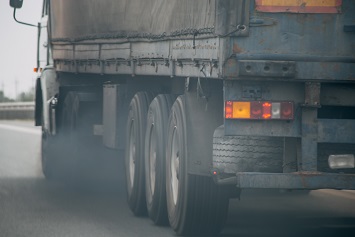Environmental groups and, collectively, 16 state attorneys general (AGs) have filed two separate lawsuits against the EPA for its decision to suspend by 1 year enforcement of the Agency’s emissions requirements for glider vehicles regulated under the EPA’s Phase 2 rule for medium- and heavy-duty engines and vehicles (October 25, 2016, Federal Register (FR)). The decision to suspend, contained in memos exchanged by the EPA’s Office of Air and Radiation (OAR) and the Office of Enforcement and Compliance Assurance (OECA), has been characterized by the petitioners as one of the last deregulatory actions by ex-EPA Administrator Scott Pruitt.

DedMityay / iStock / Getty Images Plus / Getty Images
“Over and over again, the Trump EPA has sided with corporations over New Yorkers,” said New York State AG Barbara Underwood, one of the petitioning parties. “Even on Scott Pruitt’s very last day in office, he made sure to provide polluters with a parting gift.”
The U.S. Court of Appeals for the D.C. Circuit responded positively to the environmental group petition, ordering that the 1-year enforcement suspension be stayed while the court considers the case.
Gliders—New vehicles or old?
Gliders are medium- and heavy-duty trucks that are assembled by combining certain new truck parts (that together constitute a glider kit) with a refurbished power train—the engine, the transmission, and typically the rear axle—of an older truck. By some estimates, gliders generate 20 to 40 times the emissions of hazardous air pollutants that new vehicles produce.
In the 2016 rule, the EPA took the position that gliders are new vehicles that are subject to new vehicle standards. Under the rule, companies were precluded from manufacturing more gliders than they had manufactured in any one year in the period 2010–2014 unless those newly assembled vehicles met the standards for emissions of greenhouse gases and criteria air pollutants in force the year they are assembled. That requirement took effect January 1, 2018.
But glider manufacturers, which meet the definition of small businesses, have contended that adding new parts to an old truck does not make it new; in other words, gliders should remain subject to the emissions standards that were in effect when the power train was first manufactured. In letters to the industry, Pruitt stated that he agreed with this interpretation and followed with a proposal to repeal the Phase 2 standards for gliders (November 16, 2017, FR).
No action assurance
In the first EPA memo, dated July 6, 2018, the OAR asked the OECA to exercise its enforcement discretion—code words for taking no enforcement action—for up to 1 year with regard to glider manufacturers and their suppliers while the OAR undertakes “additional evaluation of a number of matters required before it can take final action on the November 16, 2017, proposal.”
In the second memo, also dated July 6, 2018, the OECA responded that it was providing a “no action assurance” either until July 6, 2019, or until the effective date of a final rule extending the compliance date applicable to small manufacturers of glider vehicles. Essentially, the assurance allows manufacturers to continue to build gliders above the limits set in the 2016 rule without fear of enforcement.
As noted above, the D.C. Circuit stayed the no-action assurance pending further consideration by the court.
‘Super-polluting’ trucks
“By removing limits on the production of super-polluting ‘glider’ trucks, the EPA is breaking the law and jeopardizing the health and safety of New Yorkers—who would face dangerous increases in air pollution and tens of millions of dollars in damages to their health,” said Underwood.
The AG petition and the two EPA memos are at https://ag.ny.gov/sites/default/files/gliders-petition.pdf.